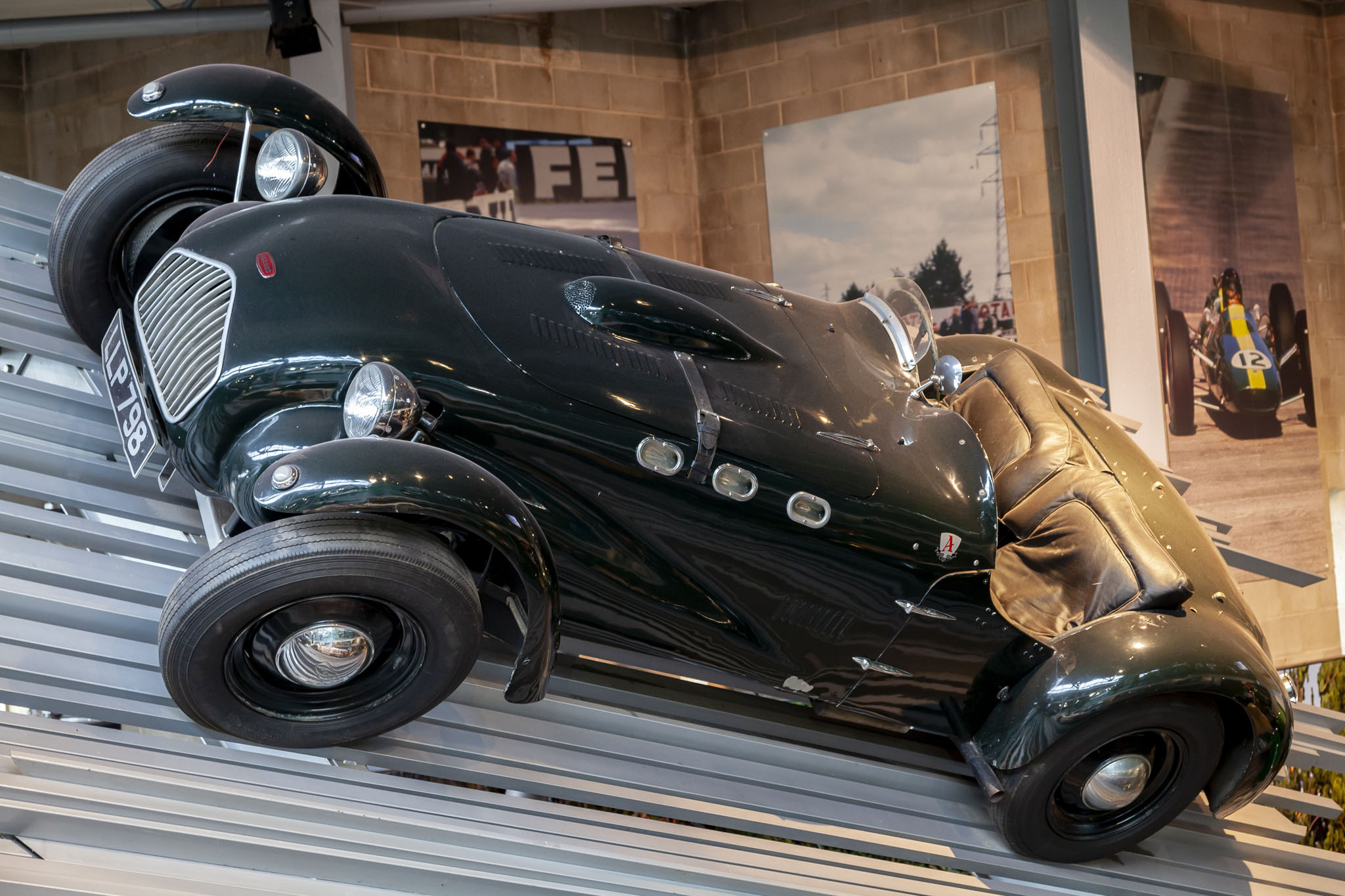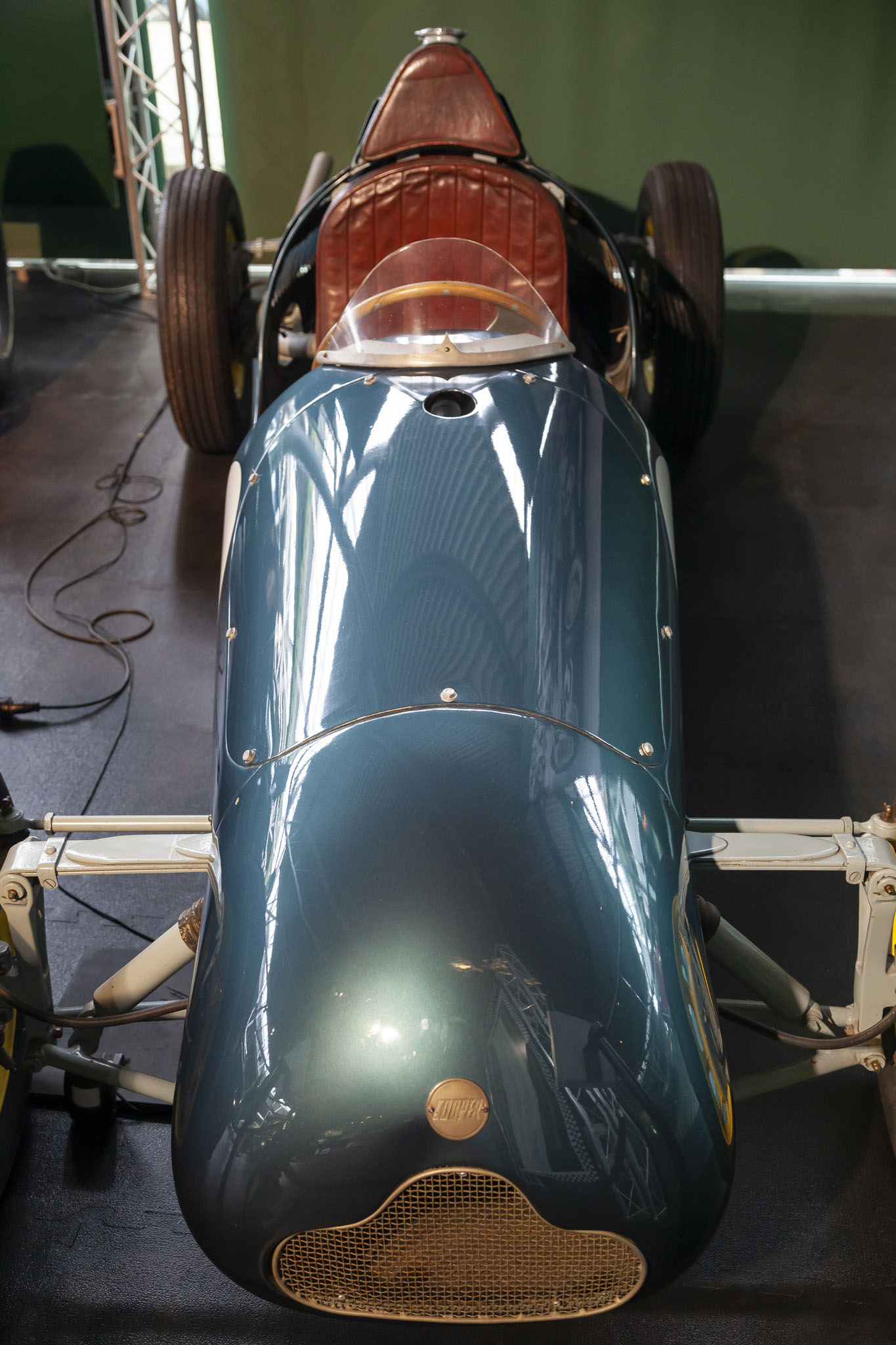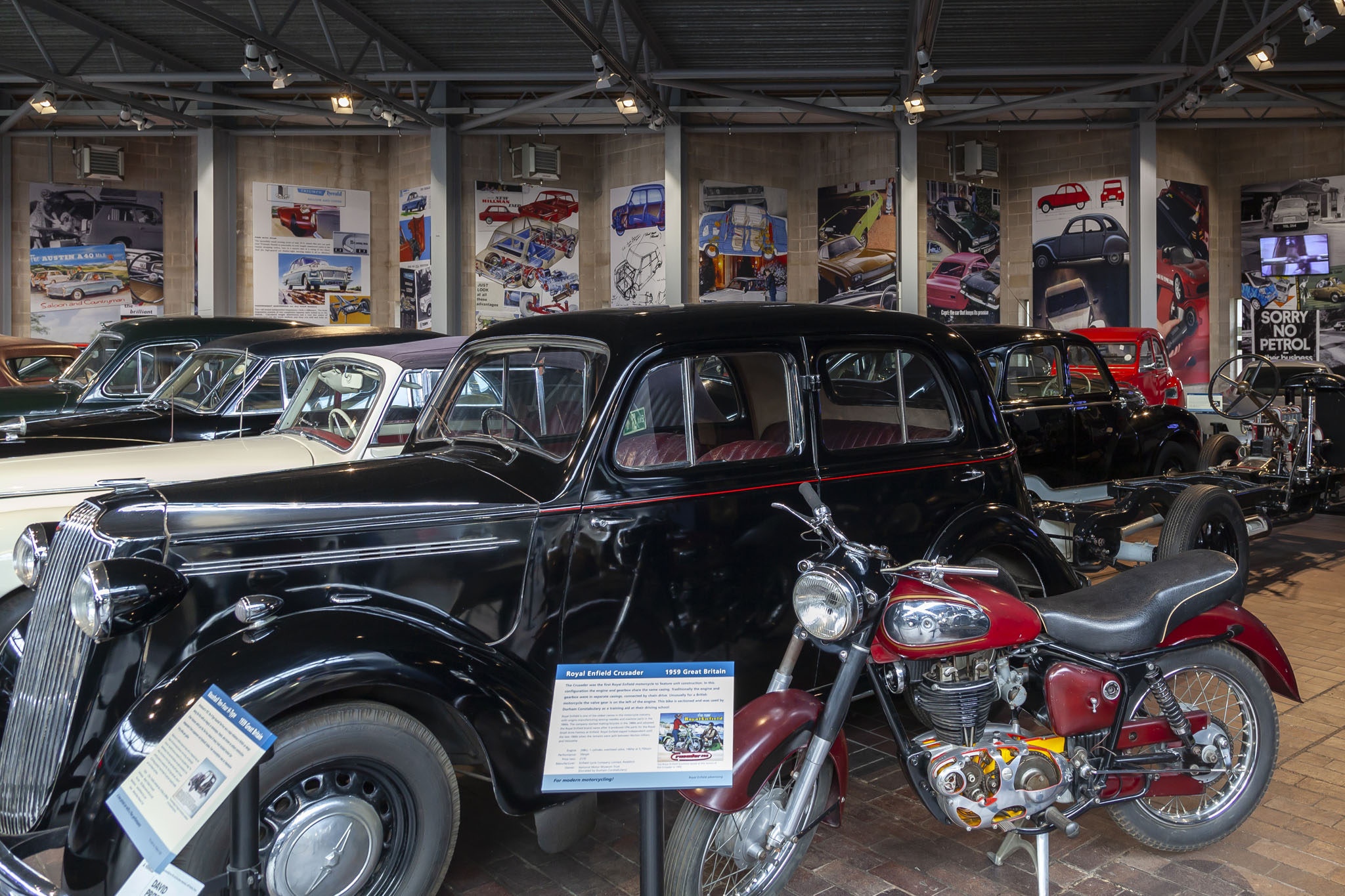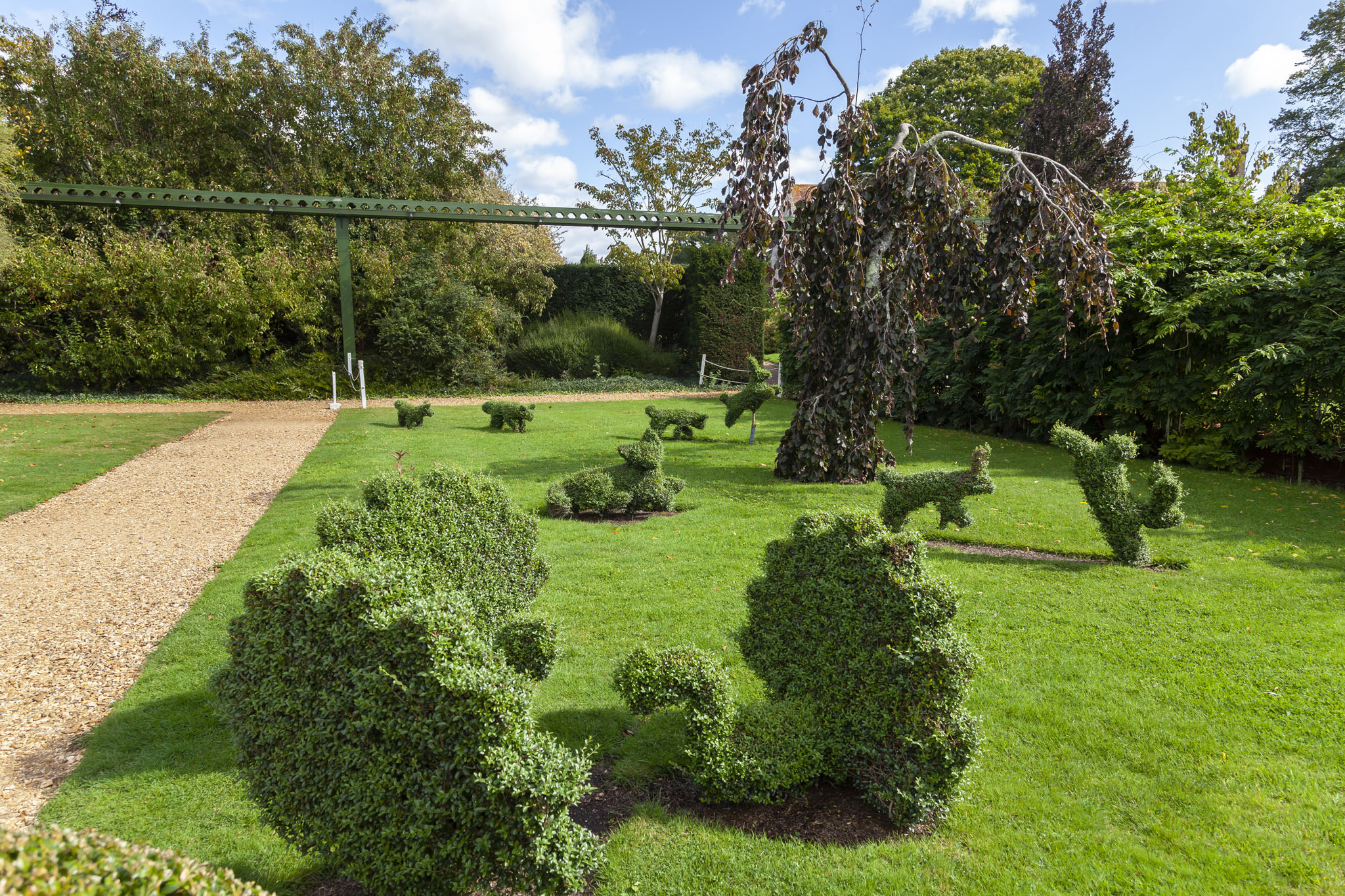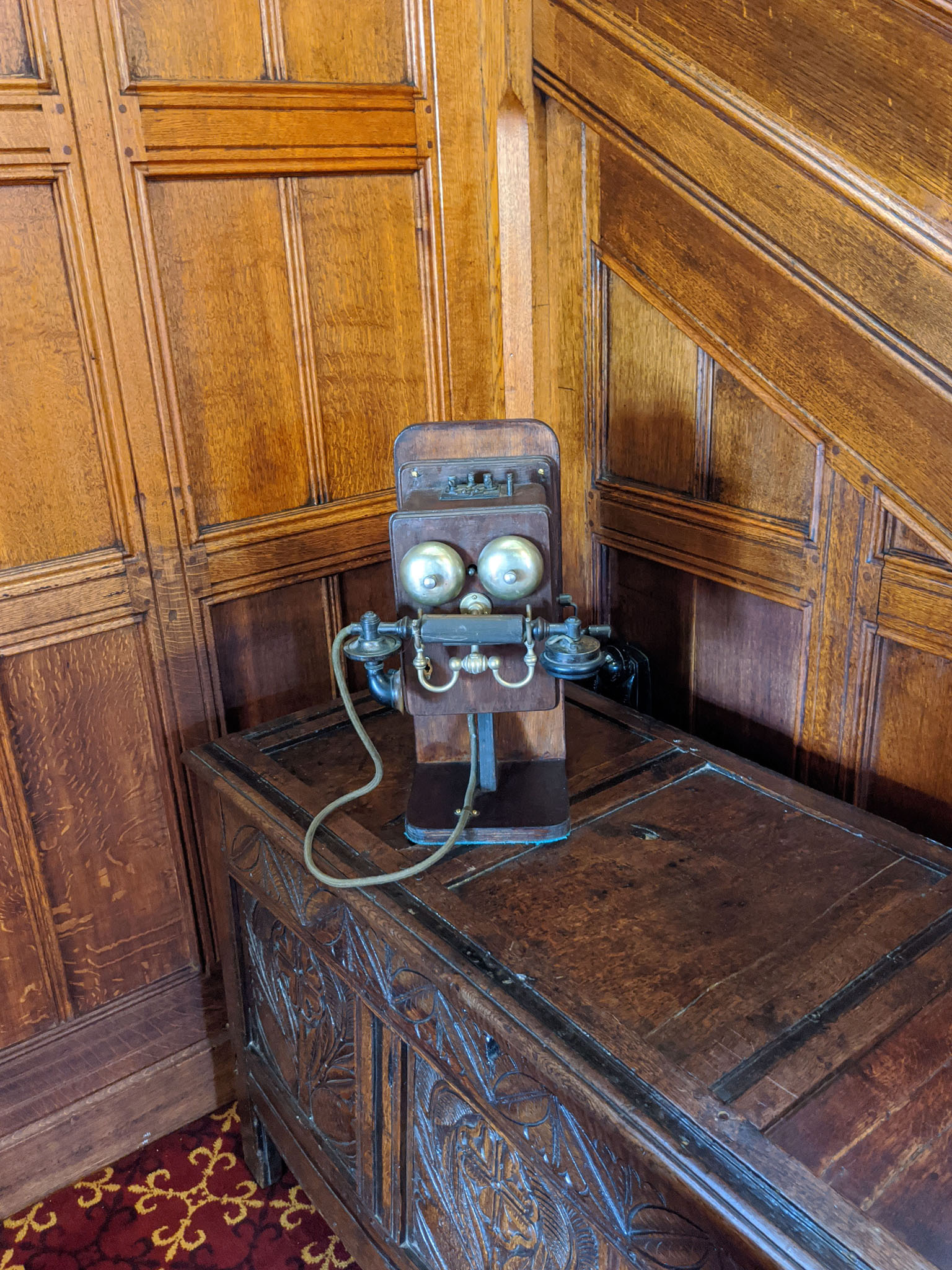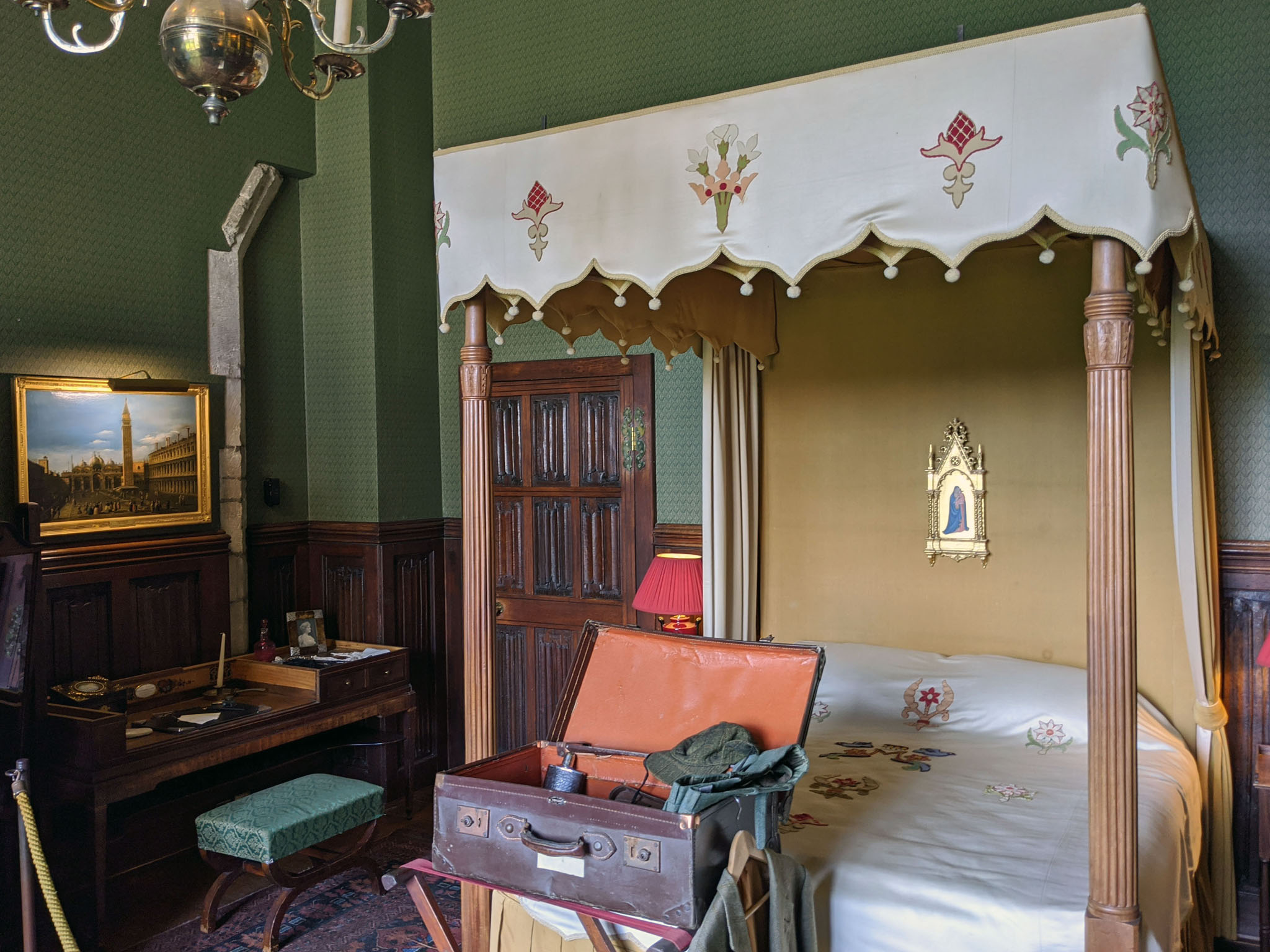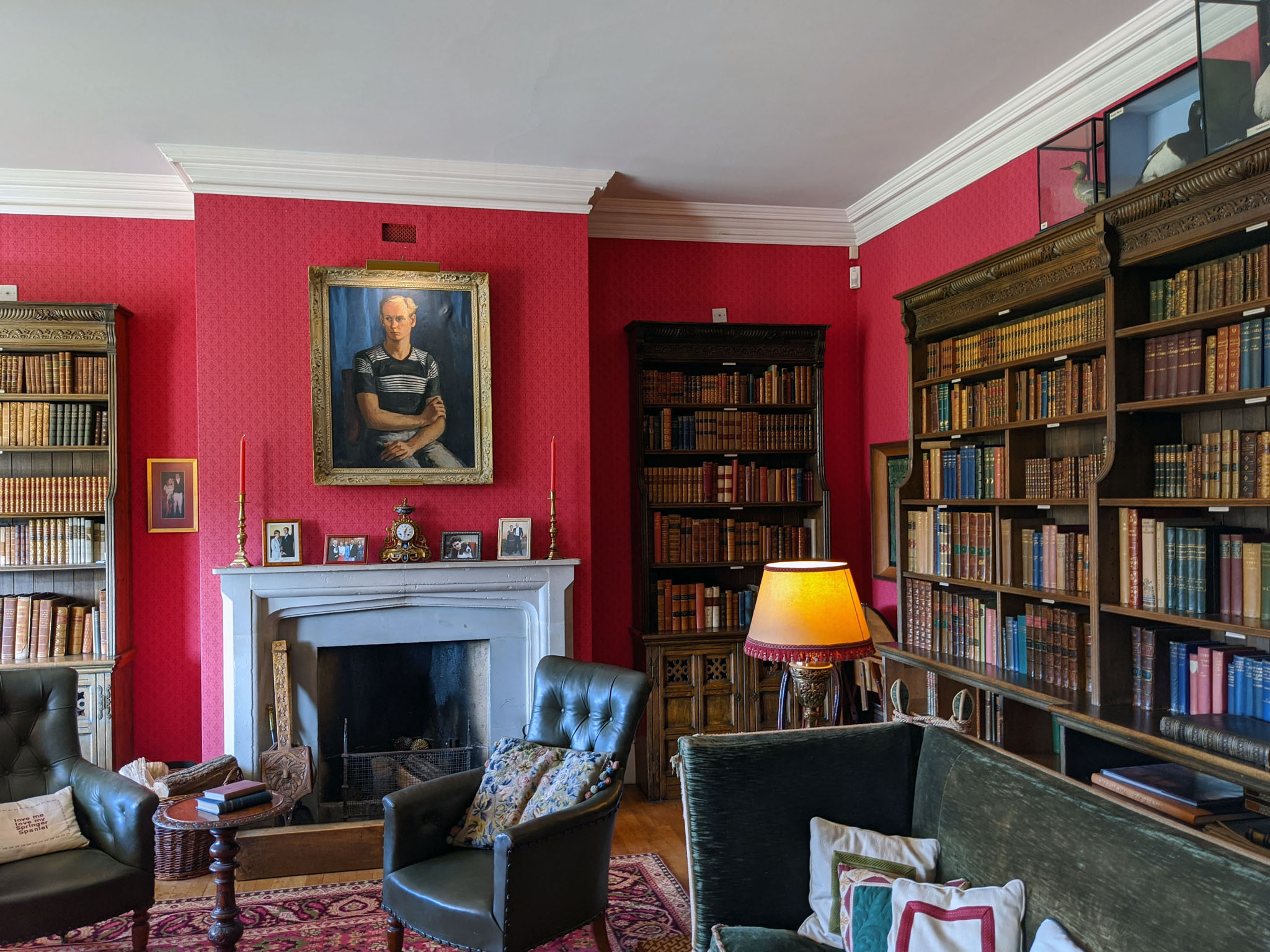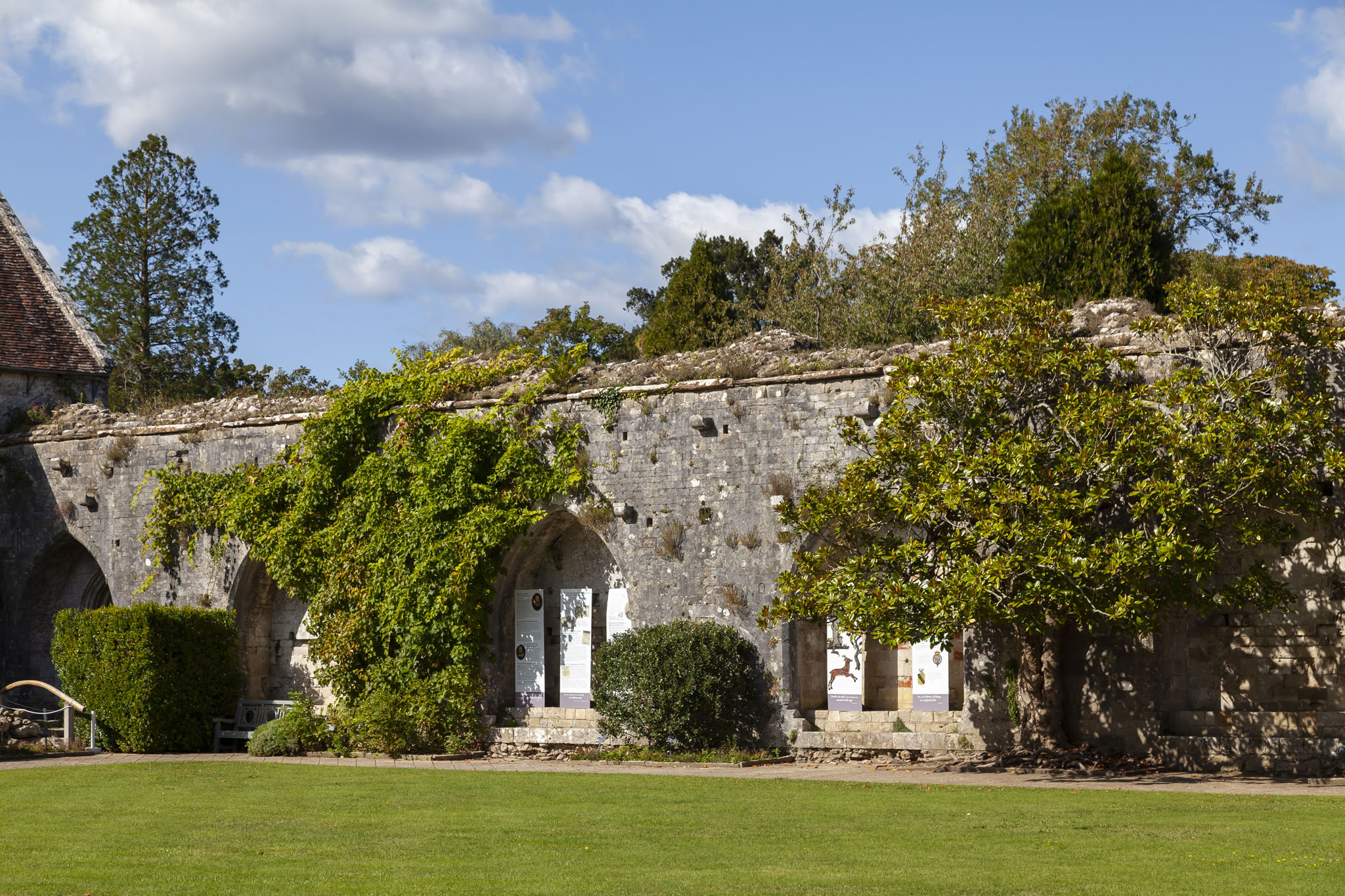The National Motor Museum at Beaulieu is in Hampshire, and we live Hampshire, and while neither of us has any great fondness for cars in general – I mean, we wouldn’t say no to an Aston Martin if it were offered, but we’ve never lusted after the latest, flashiest model of vehicle and we never watch Formula 1 racing – this proximity to a museum dedicated to vintage and classic cars set in spacious grounds in the countryside has been a large part of the reason we’ve visited roughly every three or four years with camera in hand. The most recent of these visits – at time of writing, of course – took place in September 2020 during the pandemic and so was the first (and hopefully only) occasion where we’ve had restrictions on what we could see and the order in which we could view the exhibits. Masks, of course, were worn in all inside spaces.
First off, though, the important question for people who’ve never heard it spoken out loud: how do you pronounce Beaulieu? It’s not bow-lef, nor is it bow-loo, either of which could be decent guesses based on other words you’ve heard. It’s pronounced bew-lee, and there are examples of it being spelt Bewley in the sixteenth century. So now you know.
The reason for us popping in to visit Beaulieu was that we’d reached the end of our short break to the West Country and, since this was on the route home and we had arranged to spend a night in nearby Southampton in order to meet up for a meal with friends, it was the perfect little side-journey.
The very first thing that I pretty much always take a photo of when we step past the entrance with the tickets and shop is the immediate area of trees, bushes, and huge ferns through which part of the motor museum’s monorail passes. There’s something about this human artifact amongst ancient-looking greenery that speaks to me; I’ve probably just watched too many movies set centuries after the apocalypse in a world where nature has made a return.
Into the main part of the motor museum then where a man stood outside the entrance to ensure that everyone entering was masked up and knew to maintain a distance from the people in front. In the past we might have wandered around fairly randomly and I might have waited for people to move out of the way in order to get certain angles for shots but those Covid precautions set us all into more-or-less a single column shuffling past the cars and motorbikes and limiting shot-taking opportunities in some cases. It didn’t really make a huge difference if I’m honest and if you’ve never been to the national motor museum before then it’s not the worst way in the world to take a look around simply because it will ensure you don’t miss anything. Other than some of the things that weren’t active, that is, such as the Wheels experience. Always a fun little ride through history, but never mind.
As you’ll be able to tell from the photos, the vehicles in the museum are grouped approximately by type so you can expect to see very vintage cars together, all the motorbikes together, classic cars of certain eras close to one another, racing cars of note, etc. What you won’t get in this post is a running commentary of all of them because, again, the cars themselves from a name, age, and historical perspective aren’t a huge draw for us; for me Beaulieu has often been a way to test out a new lens with the different looks and colour of the machines under some tricky lighting conditions. That wasn’t the case this time – we’d simply not been for a while and we were in that neck of the woods (or New Forest to be more accurate) – but it’s an explanation why the photos will mostly have to speak for themselves although I’ve tried to caption them with the car or bike’s name if I’ve been able to work them out.
One thing in Beaulieu motor museum we’d not seen before was a section devoted to vintage toys and games in some way connected to cars or other vehicles. The Matchbox toy cars, in particular, brought so many fond memories flooding back and I bored my wife silly here pointing and saying “Ooh, had that one… and that one… had both of those… loved that one…”
One car that always stands out for me – yes, me, with my uncaring attitude towards motor vehicles – is the Auburn 851 Speedster. I mean, just look at the chrome tubes on this thing and those front wheel arches. This is a work of utter beauty. I’d feel almost compelled to buy a zoot suit and a Tommy Gun if I had this and wanted to head off somewhere for a drive.
One section of the museum is styled in a middle of the twentieth century way with traditional fuel pumps and shop fronts lending a period backdrop to some of the more commercial vehicles on show such as the Harrods electric van or the customised Mini created to resemble an orange for Outspan promotional work.
You’ll find a few cars around the place from TV and film shows with one of the first being that of the car from Chitty Chitty Bang Bang.
After completing our tour of the main museum area housing the cars and bikes we made our way outside and set off in the direction of the Palace House. In other years when we’ve visited Beaulieu we’ve either made use of the monorail train that circles the area or we’ve taken advantage of the vintage double decker bus that makes the journey, both of them free to use. On this occasion the bus wasn’t running and the monorail had a reduced service in operation, and since the walk wasn’t too far we decided to use our legs instead. This took us through the Victorian Gardens and led to the discovery of something we’d not seen before, the Alice’s Adventures In Wonderland Topiary.
The garden area also included a Love-Lock Sculpture, something you’ll either love or hate; one of those areas where people attach padlocks. Unlike other places we’ve seen these things this wasn’t just a random bit of railings somewhere but a metal tree with rings designed specifically for the feature, and the locks present with their engravings of names and dates seemed to indicate they were likely part of the wedding package that can be arranged through the estate.
The Palace House is reputedly one of the most haunted locations in Britain – a claim akin to the one that I am one of the most gifted humans at turning invisible – and it dates from the thirteenth century when it was built to be the gatehouse for Beaulieu Abbey. Its Gothic style comes from extensions to the building made in the sixteenth and nineteenth centuries when it had passed into the hands of the Montagu family in the wake of the Dissolution of the Monasteries. I grabbed some photos from outside the building while there was nobody else around before we headed inside for a quick walk through the rooms.
With it being such a lovely day – a little windy and cold, but fabulously bright and clear – I had to snap some more photos of the exterior of Beaulieu Palace House before leaving this spot.
If you look at the photo below you can see that one of the corbels is obviously a little different to the rest. This is a likeness of Edward, 3rd Lord Montagu, and was put in place to replace one in need of restoration in 2006.
We finished our exploration of the grounds at Beaulieu with a quick stroll across to the Beaulieu Abbey ruins. The entire estate at Beaulieu was originally a Cistercian abbey, founded by King John in 1203, and housing only monks from France. The abbey was large, had an infirmary, cloisters, farms, gardens, a refectory, and was rich, and had important status as a sanctuary having been granted “exempt abbey” status by Pope Innocent III, leaving it answerable to nobody but the Pope himself. As a result Beaulieu found itself hosting fugitives and political enemies of the crown but from 1536 that came to an end when King Henry VIII started to disband monasteries, abbeys, and churches across England. Beaulieu Abbey was bought by Thomas Wriothesley, 1st Earl of Southampton, who immediately tore down the church then took to converting the gatehouse into his home (now the Palace House) while giving some of the buildings around the cloisters to the locals to use as a new parish church and allowing other buildings to fall into ruin. You can still make out the ground plan of the abbey thanks to the ruins present and the cloisters area, well-maintained with a peaceful space surrounded by arched walls, gives a sense of how grand the abbey would have been.
That completed our 2020 visit to Beaulieu National Motor Museum with just a short stop to grab something to eat and drink in the café before leaving. That also completed our 2020 West Country Break and we spent the remainder of the day in Southampton, grabbing a few drinks and a meal with some friends before making our way home.


















